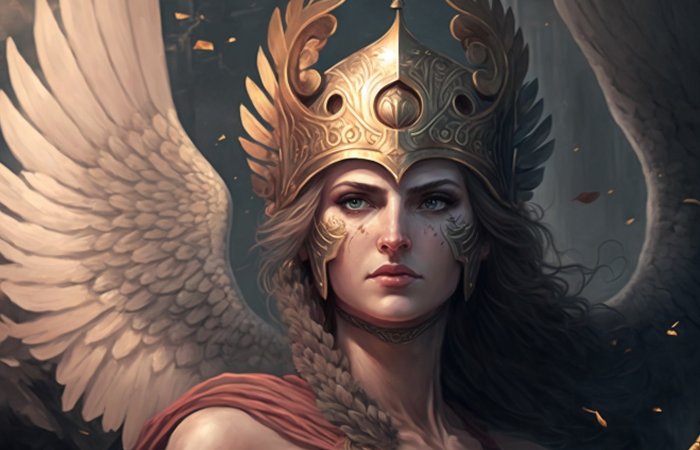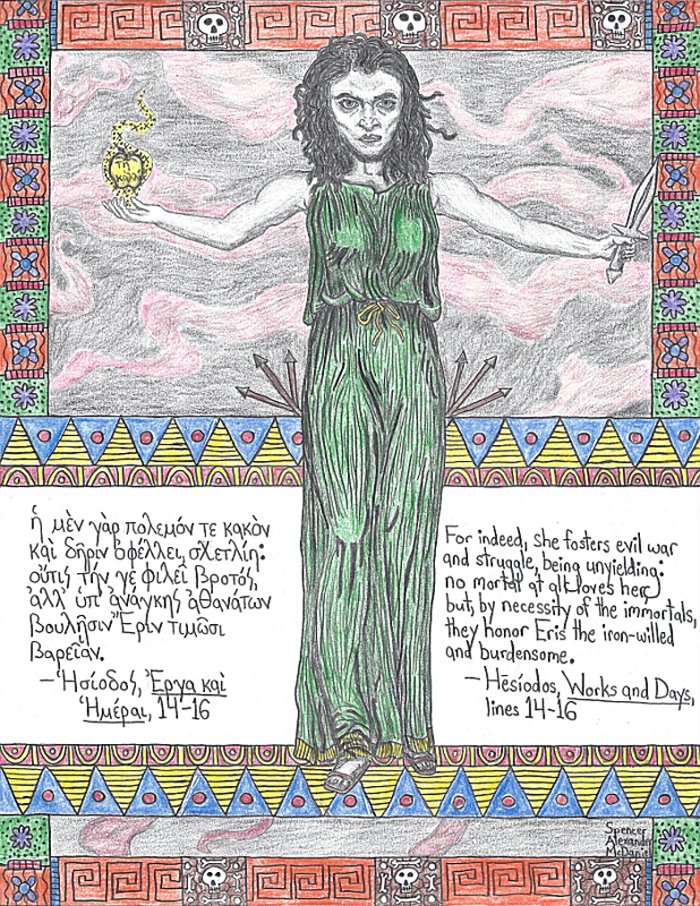Troublemaker Eris: Greek Deity That Ignited Hatred Among All
A. Sutherland- AncientPages.com - The Greek goddess Eris means everything wrong: envy, jealousy, hatred among human beings, chaos, confusion, tragedies, and conflict. Her attribute, the golden apple, was related to a great disaster.
Eris (her Roman counterpart was Discordia) had two faces and two characters: one was destructive, as she liked to destroy everything she met on her way, and the other was creative when she was stimulated to action; she could represent a spirit of healthy competition among people.
Credit: Adobe Stock - Aleksandr
Generally portrayed as a beautiful female spirit (or, in some versions, ugly), Eris had large wings and dark, straight hair. Otherwise, she was a negative figure and not a crowd favorite due to her problematic behavior. She caused chaos and stirred up trouble wherever she set foot.
Famous is an incident with Eris when Zeus hosted the feast of the gods at the wedding of Peleus and Thetis on Mount Olympus. All gods and goddesses were invited except for one - Eris.
No one wanted Eris to attend. Who would wish to be a troublemaker, especially at the wedding?
But Eris took it personally.
While they were feasting so cheerfully and in harmony, an undesirable guest suddenly appeared: Eris, the goddess of all possible problems one can get.
Knowing her troublesome nature, Zeus did not order to send an invitation to her, but she came after all to get revenge. She threw a golden apple on the banquet table with the inscription: "for the most beautiful."
It sparked a dispute over supremacy between Hera, Athena, and Aphrodite, who were excited. They wanted an apple for themselves. The wedding banquet had become chaotic, no longer the serene assembly of joyous attendees, and it had reached a point where even Zeus had to step in. He announced that the court of Paris would settle the dispute.
This is a pencil illustration of Eris, the Greek goddess of discord, drawn by Spencer Alexander McDaniel in June 2020. Her peplos is green, symbolizing envy, a common source of strife. In her right hand, she holds golden apple with the words "τῇ καλλίστῃ" on it. In her left hand, she holds a xiphos, a kind of ancient Greek sword. A passage from Hesiodos's Works and Days is written in Greek on her right. My own English translation of the passage is written on her left. Image credit: Katolophyromai - CC BY-SA 4.0
Zeus was a clever god; he did not want to participate in such an embarrassing decision.
Paris required each goddess to disrobe so that he could see every bit of their beauty. He saw it, but he still could not make up his mind. The divine women were gorgeous.
Then, the goddesses tried bribery. In return for his vote, each goddess proposed a gift to Paris. Hera offered him earthly power, and Athena offered him military power and the glory of victories.
Finally, Aphrodite could deliver to Paris the affections of the most beautiful mortal woman—Helen of Sparta, already married to King Menelaus (a fact she did not mention).
"In faraway Sparta," she said, "in the house of King Menelaus, the most wonderful woman in the world lives, Helen. I'll give it to you." Without hesitation, Paris gave the golden apple to Aphrodite.
It eventually led to the Trojan War, with Paris, Helen, and the rest of Troy on one side and all Greek city-states on the other. Disappointed and angry, Hera chooses against Paris, who loses much because he does not select Hera at the wedding feast.
Some accounts called her the sister of the god of war, Ares, which would mean that their parents were Zeus and Hera. Eris caused the war by wreaking destruction. Ares loved conflict for its thrill and wasn't swayed by sides; he assisted one side and sometimes the other in the battle. The two were supposed to be an inseparable duo. However, even Ares had had enough of her companion sometimes and liked Olympus's tranquility. Eris was not welcomed there, and it's clear why.
In the Works and Days, Hesiod proposes two separate Eris. One is a daughter of Nyx (Night) and gives birth to many offspring representing negative characters. The other Eris represents a spirit that gives people a healthy sense of competition, but she has never been remembered for that. Instead, she is predominantly recognized as the symbol of troubles culminating in Greek mythology's disastrous war.
In the religion of ancient Greece, the cult of Eris was not widespread, probably due to her negative role in mythology. However, her impact on other mythological characters and events makes her an essential figure in the Greek pantheon.
Her depictions were common in ancient artwork, on vases and frescoes, often accompanying depictions of disputes and battles.
Eris symbolizes various abstract ideas, primarily associated with harshness and death, along with other adverse emotions that most individuals typically prefer to avoid.
Written by - A. Sutherland - AncientPages.com Senior Staff Writer
Copyright © AncientPages.com All rights reserved. This material may not be published, broadcast, rewritten or redistributed in whole or part without the express written permission of AncientPages.com
More From Ancient Pages
-
 Did Neanderthals And Modern Humans Meet In The Czech Republic 50,000 Years Ago?
Archaeology | Jun 17, 2017
Did Neanderthals And Modern Humans Meet In The Czech Republic 50,000 Years Ago?
Archaeology | Jun 17, 2017 -
 Spearhead Mound – Destroyed Burial Place Of Adena Giants?
Featured Stories | Jun 1, 2021
Spearhead Mound – Destroyed Burial Place Of Adena Giants?
Featured Stories | Jun 1, 2021 -
 Mystery Of The Strange Rock In New England That People Fear To Approach
Featured Stories | Apr 17, 2024
Mystery Of The Strange Rock In New England That People Fear To Approach
Featured Stories | Apr 17, 2024 -
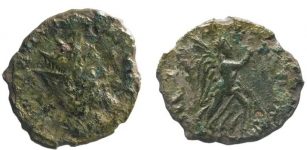 Extremely Rare Ancient Coin Of Short-Lived Roman Ruler Laelianus Discovered
Archaeology | Jun 25, 2019
Extremely Rare Ancient Coin Of Short-Lived Roman Ruler Laelianus Discovered
Archaeology | Jun 25, 2019 -
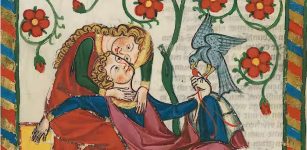 Valentine’s Day’s Connection With Love Was Probably Invented By Chaucer And Other 14th-Century Poets
Ancient Traditions And Customs | Feb 14, 2023
Valentine’s Day’s Connection With Love Was Probably Invented By Chaucer And Other 14th-Century Poets
Ancient Traditions And Customs | Feb 14, 2023 -
 Ancient Thriving Market Of Khan al-Tujjar (The Merchants’ Caravanserai) Discovered In Lower Galilee
Archaeology | Feb 20, 2024
Ancient Thriving Market Of Khan al-Tujjar (The Merchants’ Caravanserai) Discovered In Lower Galilee
Archaeology | Feb 20, 2024 -
 Is A Viking Settlement And An Even Older Church Hidden Under St. Clement’s Church In Norway?
Archaeology | Apr 13, 2017
Is A Viking Settlement And An Even Older Church Hidden Under St. Clement’s Church In Norway?
Archaeology | Apr 13, 2017 -
 3,400-Year-Old Cuneiform Tablet Excavated In Old City Of Alalah
Archaeology | Aug 23, 2020
3,400-Year-Old Cuneiform Tablet Excavated In Old City Of Alalah
Archaeology | Aug 23, 2020 -
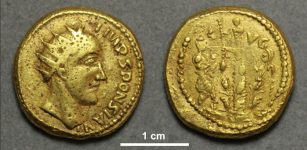 Ancient Roman Coins Thought To Be Fakes Are Authentic – Experts Say
Archaeology | Nov 23, 2022
Ancient Roman Coins Thought To Be Fakes Are Authentic – Experts Say
Archaeology | Nov 23, 2022 -
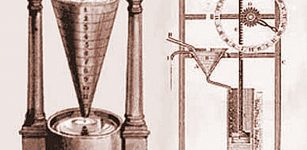 Ancient Greeks Invented Alarm Clocks
Ancient History Facts | May 6, 2016
Ancient Greeks Invented Alarm Clocks
Ancient History Facts | May 6, 2016 -
 Is A Viking Settlement And Even Older Church Hidden Under St. Clement’s Church In Norway?
Archaeology | Apr 13, 2017
Is A Viking Settlement And Even Older Church Hidden Under St. Clement’s Church In Norway?
Archaeology | Apr 13, 2017 -
 Edzna: Ancient Maya City With Sophisticated Underground System Of Canals To Control Unpredictable Floods
Featured Stories | Jun 2, 2021
Edzna: Ancient Maya City With Sophisticated Underground System Of Canals To Control Unpredictable Floods
Featured Stories | Jun 2, 2021 -
 Mysterious Skeleton Of Unusual Lady Anchoress Of York Barbican Discovered By Archaeologists
Archaeology | Feb 7, 2023
Mysterious Skeleton Of Unusual Lady Anchoress Of York Barbican Discovered By Archaeologists
Archaeology | Feb 7, 2023 -
 Long-Standing Mystery Of What May Have Triggered Ice Age Solved – New Study
Archaeology | Jun 24, 2022
Long-Standing Mystery Of What May Have Triggered Ice Age Solved – New Study
Archaeology | Jun 24, 2022 -
 Intriguing Ancient Roman Road Discovered Under The New Town In Devon
Archaeology | Feb 7, 2023
Intriguing Ancient Roman Road Discovered Under The New Town In Devon
Archaeology | Feb 7, 2023 -
 Mysterious Advanced Underground Civilization And A Secret Society – Astonishing Discovery And Connection – Part 1
Civilizations | Apr 21, 2018
Mysterious Advanced Underground Civilization And A Secret Society – Astonishing Discovery And Connection – Part 1
Civilizations | Apr 21, 2018 -
 Where Does The Expression “Pyrrhic Victory” Come From?
Ancient History Facts | Apr 18, 2018
Where Does The Expression “Pyrrhic Victory” Come From?
Ancient History Facts | Apr 18, 2018 -
 Napta Playa – Egypt’s Stonehenge And Its Ancient Astronomical Alignments
Featured Stories | Feb 18, 2018
Napta Playa – Egypt’s Stonehenge And Its Ancient Astronomical Alignments
Featured Stories | Feb 18, 2018 -
 Samurai Swords: Katana And Wakizashi And Their Long Tradition
Ancient Traditions And Customs | Aug 6, 2018
Samurai Swords: Katana And Wakizashi And Their Long Tradition
Ancient Traditions And Customs | Aug 6, 2018 -
 ‘Sea Monsters’ Were Real Millions Of Years Ago: New Fossils Tell About Their Rise And Fall
Featured Stories | Oct 8, 2022
‘Sea Monsters’ Were Real Millions Of Years Ago: New Fossils Tell About Their Rise And Fall
Featured Stories | Oct 8, 2022

